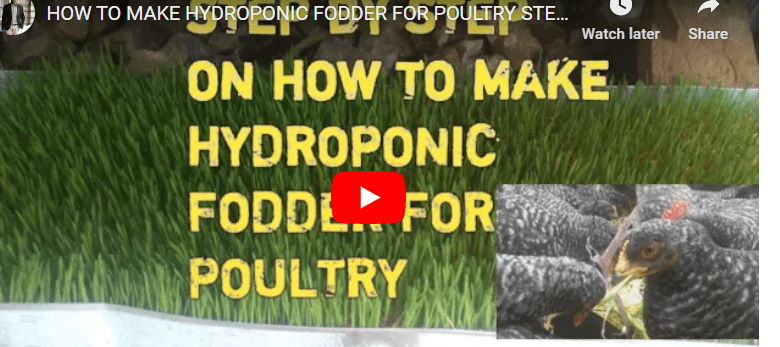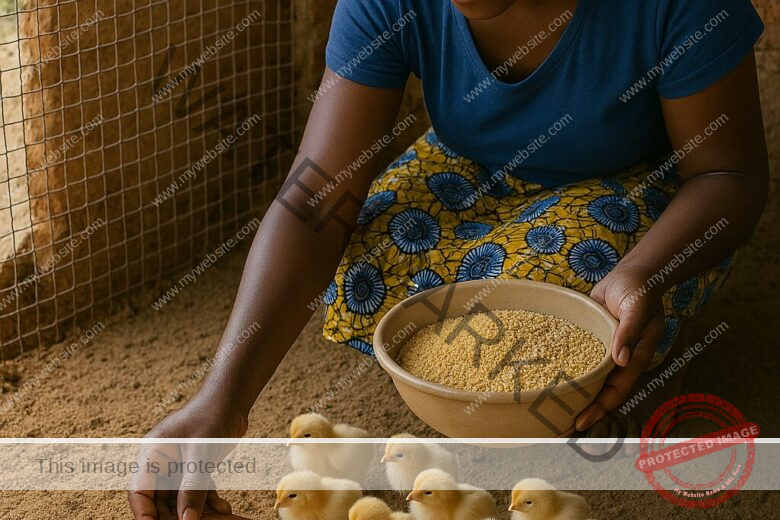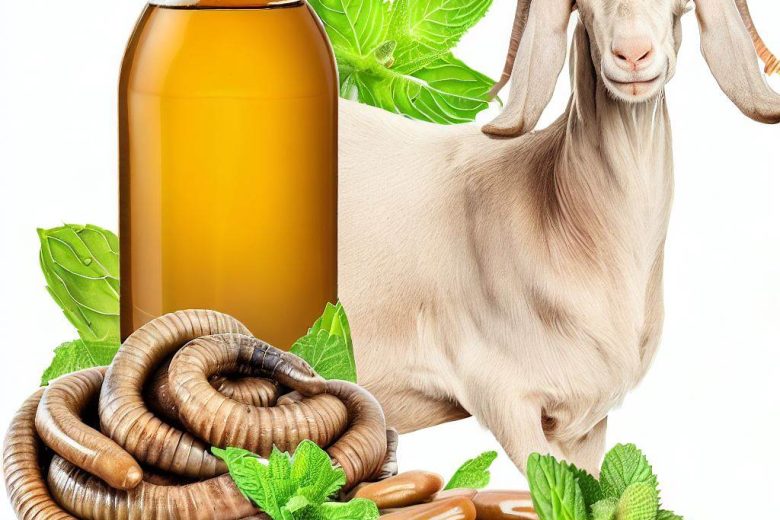Hydroponic fodder production is an innovative and sustainable way to provide livestock with fresh, nutrient-rich food. This method of production involves growing fodder such as barley, oats, or wheat in a controlled environment and feeding it to poultry, such as chickens, ducks, and geese.
This step by step guide is designed to provide a comprehensive overview of the process of hydroponic fodder production for poultry.
It will cover the materials needed, the procedure for setting up a hydroponic fodder system, and the best practices for harvesting and feeding the fodder to your animals.
With this guide, you will be able to ensure that your poultry is receiving a healthy and balanced diet of fresh, nutrient-rich fodder.
Hydroponic Fodder Production PDF for Poultry [Step by Step Guide]
You’ve heard of hydroponic farming, but did you know you can use it to feed poultry? Hydroponic fodder production is a process that uses nutrient-rich water and a growing medium to produce feed for poultry.
It involves growing fodder (a mix of seeds and grains) in a container filled with water and a growing medium, such as gravel. The water is kept aerated and enriched with nutrients to ensure that the crops flourish.
Read Also: [Beginners Guide] Hydroponic Fodder Production For Rabbits PDF
This method of growing feed requires minimal space and labor, and the crops can be harvested in as little as 4-7 days. Hydroponic fodder production is an efficient and sustainable way to feed your poultry.
Choosing the Right Seeds for Hydroponic Fodder Production for Poultry
When selecting crops for hydroponic fodder production for poultry, it is essential to consider various factors to ensure the success of your operation and the health and well-being of your birds.
When it comes to selecting crops for hydroponic fodder production for poultry, there are a few options you can consider. Maize, pulses, wheat, oat, and horse gram seeds are all suitable choices to use in the process.
Here are a few factors you should consider when making your selections:
Read Also: [Beginners Guide] Hydroponic Fodder Production PDF
Nutritional Requirements
The first and foremost factor to consider is the nutritional requirements of your poultry. You should select crops that are high in protein, vitamins, and minerals, such as barley, wheat, alfalfa, and clover.
These crops will provide the essential nutrients your birds need to thrive and grow.
Growth Requirements
You should also consider the growth requirements of the crops you plan to grow. Some crops may require specific temperature or light conditions, while others may grow better in cooler temperatures or low light.
You should choose crops that will grow well in the environmental conditions you can provide.
Germination Rate
The germination rate of the seeds you select is also an important factor to consider. You want to choose seeds that have a high germination rate so that you can achieve optimal results from your hydroponic system.
Read Also: [PDF Sample] Business Plan for a Poultry Farm in Ghana
Pest and Disease Resistance
Pests and diseases can quickly spread in hydroponic systems and cause significant damage to your crops. You should choose crops that are naturally resistant to common pests and diseases, or that have been treated to reduce their susceptibility.
Adaptability
You should also consider the adaptability of the crops you select. Some crops may not be well-suited to hydroponic systems and may not grow as well as others.
You should choose crops that are known to be adaptable to hydroponic systems and have a proven track record of success.
Cost
Finally, you should consider the cost of the seeds and the crops you select. Some seeds and crops may be more expensive than others but may provide greater nutritional benefits for your birds.
You should weigh the cost versus the benefits of each crop and choose the one that offers the best value for your operation.
Preparing the Hydroponic System for Planting
Designing a hydroponic fodder system for poultry can seem like a daunting task, but it’s quite simple if you follow these steps.
Here’s a step by step guide to designing your hydroponic fodder system:
Step 1. Determine the Space
Firstly, determine the amount of space you have available to set up your hydroponic fodder system. You can use a 10 ft x 10 ft shade net or a low-cost greenhouse to grow your hydroponic fodder.
Step 2. Choose the Right Location
It is important to choose the right location for your hydroponic system. It is recommended to place the shed net near the livestock shade, as it will make it easier to operate.
Step 3. Ventilation
To maintain the temperature and humidity, it is important to allow ventilation into your hydroponic system. Leave some open space between the roof and side walls of the shed to ensure good airflow.
Step 4. Trays
You will need medium-sized trays, about 1.5 x 3 ft, made of good quality plastic to hold the hydroponic fodder. The trays must be strong enough to support the weight of the fodder. Make sure you create 15-20 small holes in the trays to enhance the drainage of excess water.
Step 5. Racks
To hold the trays, you can build a bamboo rack, plastic rack, or metal rack inside the shed. Make three to four layers of the rack, but take care not to make it too high, as it will be difficult to spray water and remove the trays. Leave enough space between two layers to make it easy to water the seeds. Create a slight slope for each layer to one side of the rack to help the water drain more easily.
Step 6. Drainage
Create a small drainage line under the slope side of the rack to properly drain the water.
Steps to Plant and Grow Hydroponic Fodder for Poultry
Hydroponic Fodder Production is a process that involves growing high-quality, nutritious feed for livestock using a hydroponic system.
The hydroponic system allows farmers to grow feed indoors, thereby avoiding adverse weather conditions and making it possible to produce feed all year round. Here is a step by step process to grow hydroponic fodder for your livestock.
Step 1: Soaking Seeds
The first step in the hydroponic fodder production process is to soak the seeds. To do this, take 5-7 liters of warm water and pour it into a plastic bucket.
Then, add the seeds to the water and remove any seeds that float on top of the water as they will not sprout.
Next, add 50-100 gm of salt to the water to help minimize fungus production on the sprouted seeds. You should leave the seedlings to soak in the water for about 12 hours.
Step 2: Draining and Washing Seeds
Once the seeds have soaked for 12 hours, drain the water and then wash the seeds with clean water.
Transfer the washed seeds to a gunny bag and allow them to sprout. The amount of time it takes for the seeds to sprout will vary depending on the climate conditions, with a hot climate taking about 24 hours and a cold climate taking more than 24 hours.
Step 3: Setting up the Hydroponic System
Before using the trays, make sure to wash them properly and check all the holes to ensure that they are not blocked. If there is a blockage, remove it.
Transfer the sprouted seeds from the gunny bags to the trays and spread the seeds evenly. Place the trays on a rack, which you can build from bamboo, plastic, or metal.
Make sure to create three to four layers of the rack, but take care that the rack is not too high as it will make it difficult to spray water and remove the trays.
Keep enough space between each layer to make it easy to water the seeds, and create a slight slope for each layer so that water can drain from the trays more easily.
Make a small drainage line under the slope side of the rack to properly drain the water.
Step 4: Watering the Seeds
Every day, water the sprouted seeds with a light spray of water. You can use a watering can or a sprinkler system to provide water. In hot weather conditions, water the seeds every two hours, and in cold weather conditions, water them every four hours to help maintain moisture.
Step 5: Harvesting the Fodder
In six to seven days, your hydroponic fodder will be ready to harvest. Take the slabs of fodder out of the trays and cut them into small pieces before feeding them to your livestock. This will make it easier for the animals to eat the fodder properly.
Benefits of Hydroponic Fodder for Poultry
Here are some vital benefits of hydroponic fodder for poultry.
Enhanced Nutritional Content
Hydroponic fodder boasts a higher concentration of nutrients compared to traditional dry fodder or grains. This type of feed contains a rich source of carbohydrates, minerals, and vitamins.
Faster Growth Cycle
In contrast to traditional fodder which typically requires a growth period of two months, hydroponic fodder can be grown in a mere seven days. This significantly shorter growth cycle provides a more efficient means of producing high-quality feed for livestock.
Efficient Water Usage
The production of hydroponic fodder requires significantly less water compared to traditional fodder production. It takes only 3 to 4 liters of water to grow one kilogram of hydroponic feed, whereas traditional fodder production requires an average of 70 to 100 liters of water.
Convenient Daily Production
Hydroponic fodder can be produced daily, even in regions with limited water availability, making it a more convenient option for farmers.
Chemical-Free
In hydroponic fodder production, there is no need for the use of harmful chemicals or pesticides. This results in a safer and healthier feed option for livestock.
Reduced Labor and Transport Costs
Hydroponic fodder production requires less manpower and incurs lower transport costs as it is typically grown near the livestock shade. This makes it an economically viable option for farmers.
Maintaining the Hydroponic System for Poultry
Maintaining a hydroponic system for poultry is an important aspect to ensure good quality and consistent production of fodder for your birds.
Here are some steps to follow to properly maintain your hydroponic system:
Monitoring The Temperature And Humidity
Maintaining the temperature range of 15-32°C and relative humidity of 80-85% is essential to growing good quality fodder. You can use a thermometer and hygrometer to keep an eye on the temperature and humidity levels.
Cleaning the system: Regular cleaning of the system is necessary to keep the environment hygienic. This includes cleaning the trays, rack and shed. You can use a mild soap solution to clean the system.
Water Quality
The water used for the hydroponic system should be clean and free from contaminants. You can use a water purification system or check the water regularly to ensure its quality.
Light Intensity
Light intensity plays an important role in the growth of the fodder. Maintaining the correct light intensity is necessary. You can use LED lights or natural light to provide light to the system.
Maintaining The Ph Level
The pH level of the water used for the hydroponic system should be in the range of 6.0-6.5. You can use a pH meter to measure the pH level and adjust it accordingly.
Fertilizer Application
You may need to add fertilizers to the water to provide adequate nutrients to the fodder. Choose a fertilizer that is suitable for hydroponic systems and use it according to the manufacturer’s instructions.
Pest Control
Regular monitoring for pests is necessary to keep the hydroponic system free from pests. You can use insecticides or natural pest control methods to keep pests at bay.
Tips for Successful Hydroponic Fodder Production
If you are interested in hydroponic fodder production for your poultry, here are some tips to ensure success
Choose The Right Seeds
Select seeds that are appropriate for your climate and have a high sprouting rate. Maize, pulses, wheat, and horse gram are some of the most common seeds used for hydroponic fodder production, but avoid using pearl millet and sorghum seeds as they contain poison that can harm your livestock.
Opt For A Suitable Location
The hydroponic system needs a controlled environment, so choose a location that offers a temperature range of 15-32 °C and a relative humidity of 80-85%. Also, make sure the location is near the livestock shade for easy operation.
Maintain Proper Ventilation
Ventilation is crucial for maintaining the temperature and humidity in the hydroponic system. Make sure you leave enough open space between the roof and side walls to allow for proper ventilation.
Use Proper Trays
Trays should be of a medium size, and made of good quality plastic. The trays must be strong enough to hold the weight of the sprouted seeds and must have small-sized holes for draining excess water.
Select The Right Rack
To hold the trays, you can build a bamboo, plastic, or metal rack inside the shed. Make sure to build three to four layers of the rack, but not too high as it will make it difficult to water the seeds and remove the trays.
Also, keep enough space between two layers and create a slight slope for each layer to one side of the rack to easily drain water.
Use Proper Watering Techniques
Water the sprouted seeds regularly to maintain moisture. In hot weather conditions, water the seeds after every two hours, and in cold weather conditions, water them after every four hours. You can use watering cans or a sprinkler system to provide water.
Monitor The Hydroponic System
Make sure you routinely monitor the temperature and humidity levels and adjust when needed. Keep an eye out for any signs of disease or fungus and take corrective measures if necessary.
Harvest The Fodder At The Right Time
The hydroponic fodder is ready to harvest in six to seven days. Cut the slabs into small pieces before feeding them to your poultry to make it easier for the animals to eat.
Managing Pests and Diseases in Hydroponic Systems
As you venture into hydroponic fodder production, it’s crucial to consider how you’ll manage pests and diseases that may arise in your system. Here are a few tips to help you keep your hydroponic system healthy and productive:
Sanitation
Regular cleaning of your system, trays, and equipment is essential to prevent the buildup of pests and diseases. Ensure that you sanitize all surfaces that come into contact with the sprouts, water, or air.
Proper Nutrition
A balanced diet of nutrients is crucial for the growth of healthy sprouts, which can help prevent pest and disease outbreaks. Make sure you are following the recommended nutrient ratios for your crops.
Crop Rotation
Rotating the crops you grow in your hydroponic system can help prevent the buildup of pests and diseases that are specific to certain crops. By rotating your crops, you can reduce the risk of diseases that might have been present in the previous crop.
Airflow
Good air circulation is critical to maintaining the health of your hydroponic system. Ensure that your system has enough ventilation to allow air to circulate and prevent stagnant air, which can lead to the buildup of mold and other harmful organisms.
Monitor The Environment
Regular monitoring of temperature, humidity, and water levels can help prevent the growth of pests and diseases. Keep a close eye on these factors and make any necessary adjustments to keep your system in balance.
Use Of Beneficial Insects
Encouraging beneficial insects, such as ladybugs and lacewings, can help control pests in your hydroponic system. These insects feed on pests, reducing the need for chemical treatments.
Chemical Treatments
In some cases, chemical treatments may be necessary to control pests and diseases. However, it’s important to use chemicals sparingly and only as a last resort, as they can harm the environment and your livestock.
Challenges of Hydroponic Fodder Production for Poultry
Hydroponic fodder production for poultry can present some challenges that can impact the success of the system. Here are some of the challenges you need to watch out for.
High Startup Cost
The initial investment required to set up a hydroponic system can be expensive and may be a barrier for farmers with limited resources.
Technical Knowledge
Running a hydroponic system effectively requires a good understanding of the technology and how to maintain the right environmental conditions for the plants to grow.
Water And Nutrient Management
Balancing the right amount of water and nutrients is crucial for the success of the hydroponic system. Over or under watering and using too much or too little nutrients can result in poor quality fodder and may impact the health of the livestock.
Pest And Disease Control
Hydroponic systems provide a controlled environment, making them susceptible to pest and disease outbreaks. It’s essential to keep the system clean and take preventive measures to minimize pest and disease pressure.
Energy Requirements
Hydroponic systems require energy to operate, which can be a challenge in regions with unreliable electricity or for farmers with limited resources.
Labor Intensive
Hydroponic systems require daily monitoring, watering, and maintenance. This can be time-consuming and labor-intensive, which can be challenging for farmers with limited manpower.
Hydroponic Fodder System Design PDF
A hydroponic fodder system is a method of growing livestock feed using hydroponics. This involves the use of a controlled environment to cultivate crops without soil, such as nutrient-rich water, while avoiding the risk of pests and diseases.
This system has several benefits, including the ability to produce large quantities of food in small spaces and with minimal water usage.
For those interested in exploring this technology, there are several resources available to learn more about hydroponic fodder system design.
One such resource is a PDF document that provides a detailed guide on the design and construction of a hydroponic fodder system.
Hydroponic Fodder Cost Per Kg
The cost of hydroponic fodder per kg can vary depending on several factors, such as the type of crop grown, the cost of seeds, electricity, water, and labor.
However, one of the main advantages of hydroponic fodder systems is that they can produce a high yield of food in a small space, which can reduce the overall cost per kg.
The controlled environment of hydroponic systems can also reduce the risk of crop failure due to pests, diseases, or environmental factors.
By reducing these risks, farmers can lower their overall costs, resulting in a lower cost per kg of hydroponic fodder.
Low Cost Hydroponic Fodder System Design:
While hydroponic fodder systems offer many benefits, the cost of setting up a system can be a barrier for some farmers. However, there are ways to design and build low-cost hydroponic fodder systems that can be affordable and effective.
One approach is to use recycled materials, such as PVC pipes or plastic containers, for the growing containers. Additionally, using less expensive nutrient solutions and optimizing the system for efficient water usage can also reduce costs. By adopting these approaches, farmers can achieve a low-cost hydroponic fodder system without sacrificing efficiency.
Hydroponic Fodder Business Plan:
Starting a hydroponic fodder business requires a detailed plan that considers the market demand, competition, production costs, and marketing strategies.
One of the first steps in developing a hydroponic fodder business plan is to research the demand for the product in the local market or region.
Next, the farmer needs to determine the cost of production, including the cost of equipment, seeds, nutrient solutions, labor, and marketing.
The farmer should consider the competition and develop a unique selling proposition to differentiate their product from others.
By considering these factors, farmers can develop a comprehensive hydroponic fodder business plan that will help them succeed in the market.
Hydroponic Fodder Disadvantages
While hydroponic fodder systems offer several benefits, there are also some disadvantages that farmers should consider before implementing the technology. One disadvantage is that the initial investment can be significant, requiring specialized equipment and materials.
The system requires a stable power supply and maintenance, which can add to the ongoing costs.
Another disadvantage is that the system may not be suitable for all types of crops, and the nutrient solution needs to be monitored carefully to avoid contamination or nutrient deficiencies.
Despite these drawbacks, many farmers have found that the benefits of hydroponic fodder systems outweigh the costs, resulting in higher yields and improved profitability.
Conclusion
This hydroponic fodder production PDF for poultry provides a step-by-step guide for farmers interested in producing high-quality and nutritious feed for their birds using hydroponic systems. This resource offers practical advice on setting up the system, selecting appropriate crops, managing nutrient solutions, and optimizing production to achieve maximum yields.





One Reply to “[Beginners Guide] Hydroponic Fodder Production For Poultry PDF”